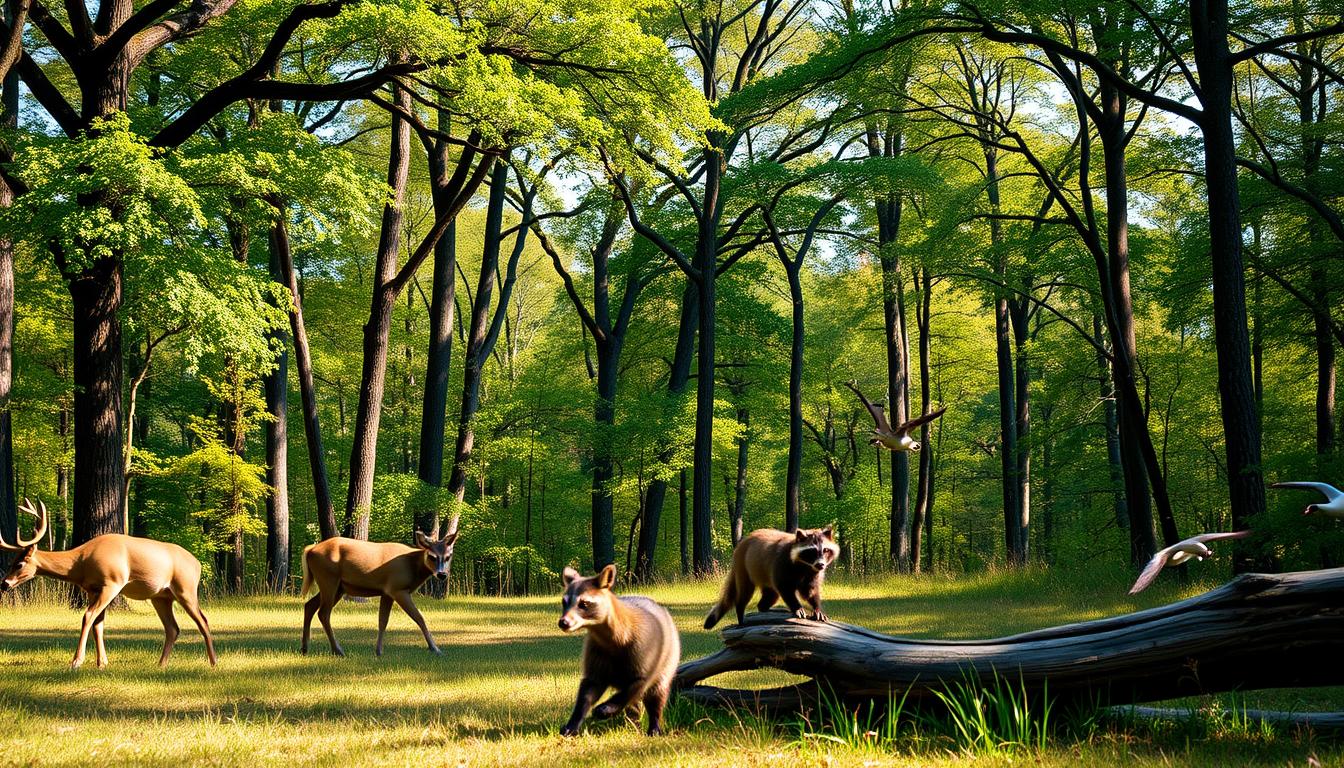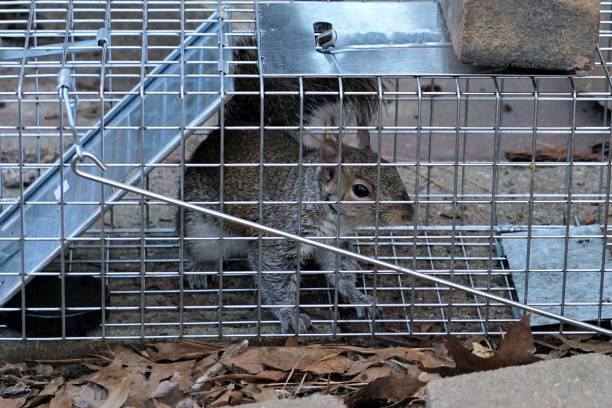
Properties in Norwalk are close to nature, making wildlife management key. It's important to use prevention, removal, and exclusion to keep humans and wildlife in balance.
Prevention stops wildlife from getting in, using things like secure fences. If prevention doesn't work, removal is needed to safely move or get rid of wildlife. Then, exclusion keeps wildlife out for good.
Norwalk's diverse wildlife brings challenges for property owners. It's important to know how to prevent and remove these issues. This helps keep properties safe and intact.
In Norwalk, several wildlife species can be a problem. Raccoons, squirrels, and bats are common intruders. They can damage property and pose health risks.
Knowing when wildlife is most active is crucial. In Connecticut, some species are more active at certain times. This affects when they might intrude on properties.
| Season | Common Wildlife Activities |
| Spring | Nesting and increased activity around homes. |
| Fall | Foraging for food before winter, often leading to property intrusions. |
Spotting wildlife intrusion signs early is key. Look for droppings, nesting materials, and unusual noises.
"The sooner you identify a wildlife issue, the easier it is to manage." - Wildlife Expert
Wildlife infestations can harm health and property. It's vital for owners to understand these risks. This way, they can take the right steps to protect their properties.
Wildlife can seriously damage properties. Rodents chew on wires and wood. Larger animals like deer can harm fences and buildings.
Wildlife also brings disease and safety risks. For example, rabies can spread through bites. Histoplasmosis can come from bat droppings.
In Norwalk, a detailed approach to wildlife management is key to safeguarding properties. It combines prevention, removal, and exclusion methods. These are customized for each property's unique needs.
Stopping wildlife from getting in is the first step in wildlife management. This can be done through:
Checking the property for weak spots is essential. It helps find out which wildlife might be a problem. It also shows what steps to take to keep them out.
Keeping up with maintenance helps a lot. This includes trimming trees, securing trash, and sealing holes. These actions greatly lower the chance of wildlife getting in.
When wildlife does get in, we use humane ways to remove it. These include:
Trapping and moving wildlife is a kind way to remove it. It needs skill to do it right, for everyone's safety.
When wildlife is a big threat, quick action is needed. Emergency services handle these situations fast and safely.
Keeping wildlife out for good is important. This can be done by:
Sealing holes where wildlife gets in stops them from coming back. We use strong, animal-proof materials for this.
Changing the area around the property makes it less attractive to wildlife. This means removing food and changing the landscape.
Using these detailed wildlife management plans, property owners in Norwalk can keep their places safe.
Keeping your property safe from animals wildlife management in Norwalk. Here, many animals can harm your health and property. At Essential Wildlife Control, we know how vital good wildlife management is for your safety.
We use prevention, humane removal, and long-term exclusion to help. Our team works hard to offer services that meet your needs.
If wildlife is a problem for you, call us for help. You can reach us at (203)6675933 or abrahamewc@gmail.com. Choosing Essential Wildlife Control means your property in Norwalk is in good hands.
A: Integrated Wildlife Management combines prevention, removal, and exclusion. It helps manage wildlife in Norwalk properties effectively.
A: Norwalk properties are close to natural habitats. This makes wildlife management key to prevent damage and health risks.
A: Look for signs like droppings, nests, or damage. These can help you spot problematic species.
A: Infestations can cause structural damage and spread diseases. They also pose safety hazards, risking health and property.
A: Inspect your property, assess vulnerabilities, and maintain it. These steps can help prevent wildlife infestations.
A: We use humane traps and relocation. We also have emergency extraction methods for safe and effective removal.
A: Seal entry points and modify habitats. These steps help prevent re-infestation and ensure long-term exclusion.
A: Choosing us means effective wildlife management and property protection. Contact us at (203)6675933 or abrahamewc@gmail.com for help.
